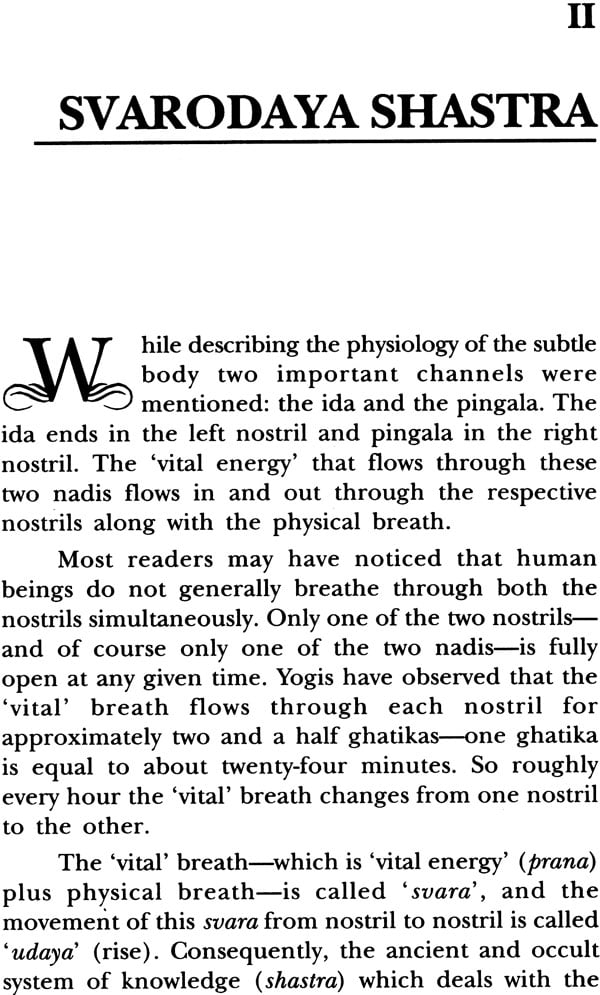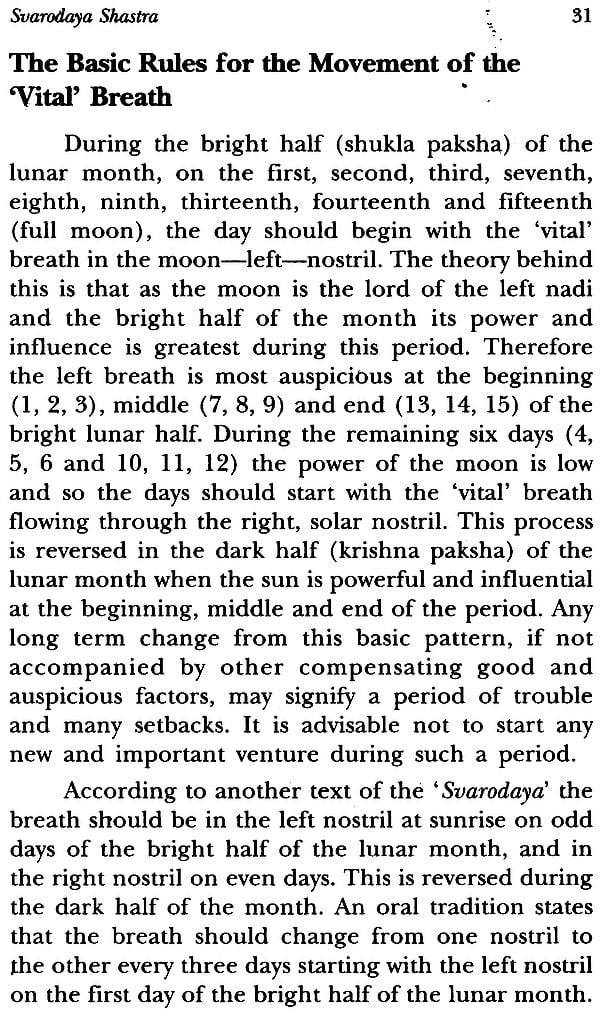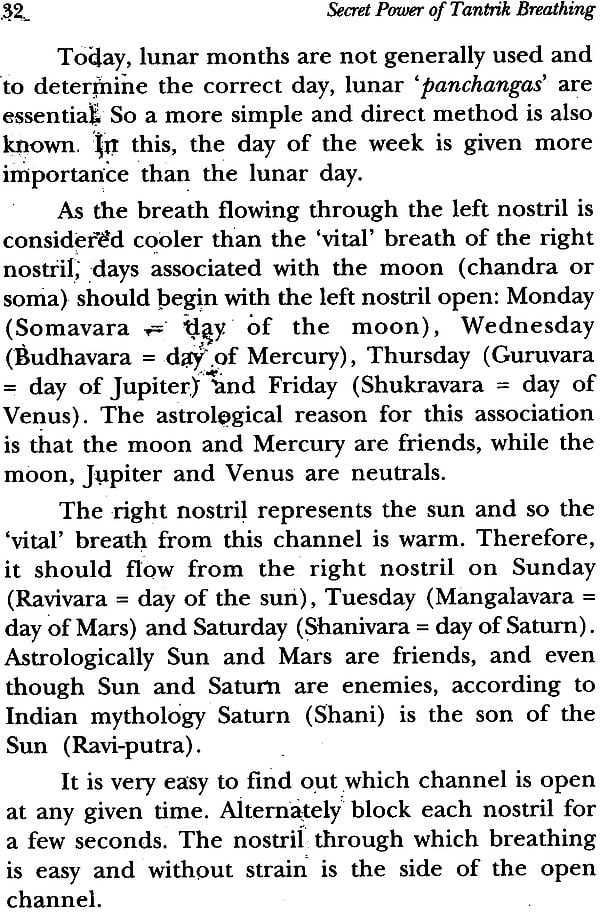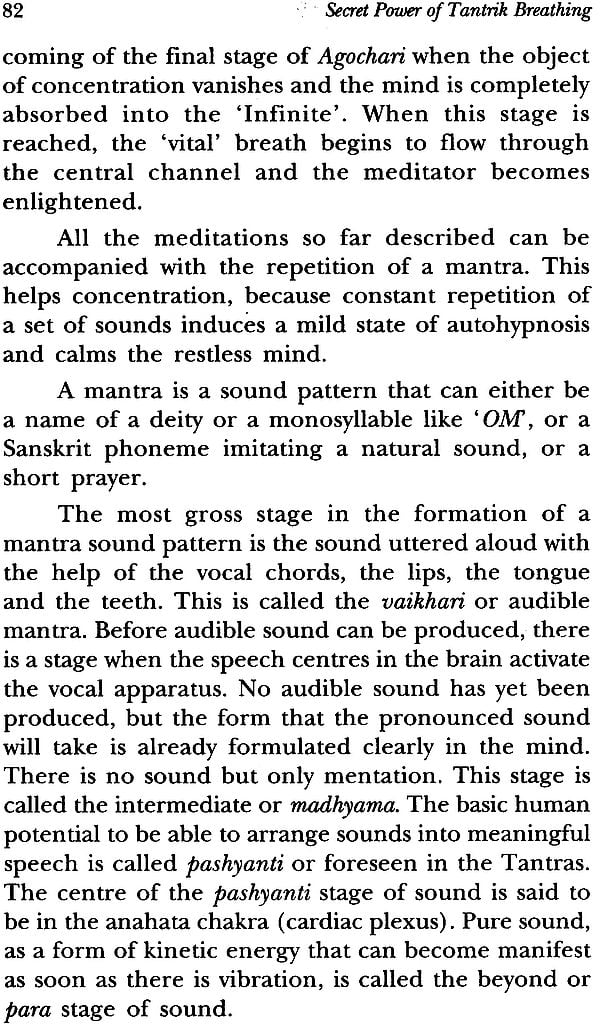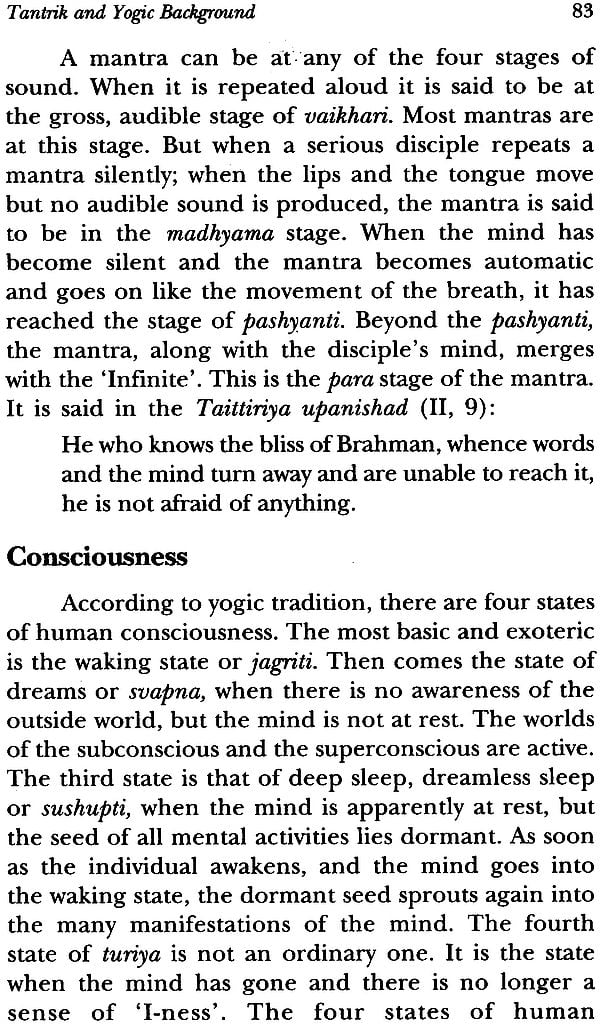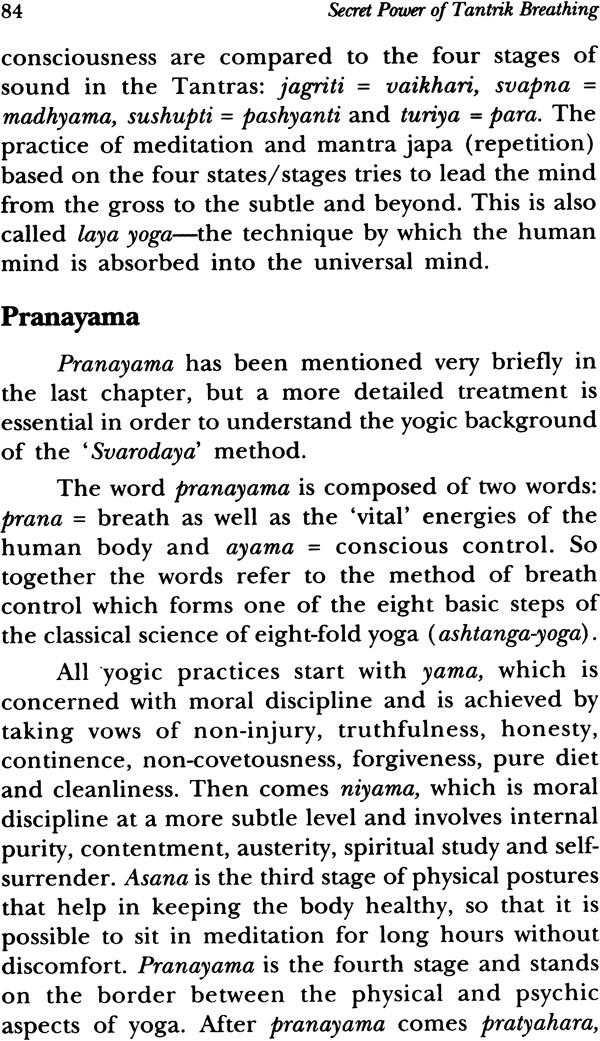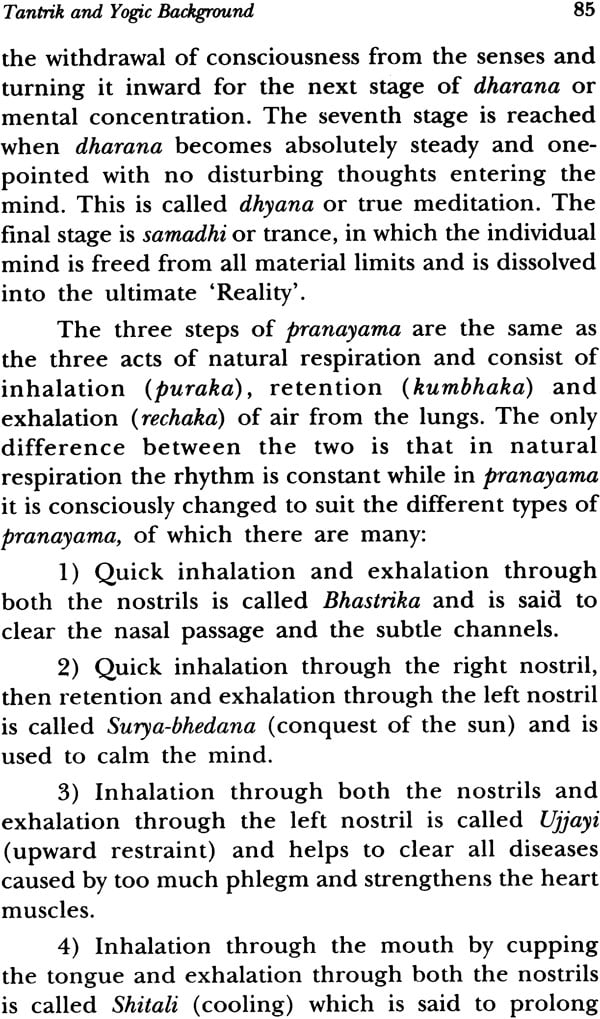
Secret Power Of Tantrik Breathing
Book Specification
| Item Code: | IDE757 |
| Author: | Swami Sivapriyananda |
| Publisher: | Stellar Publishers Pvt. Ltd. |
| Language: | English |
| Edition: | 2005 |
| ISBN: | 8170174708 |
| Pages: | 102 (Color Illus: 8, Figures: 3) |
| Cover: | Hardcover |
| Other Details | 8.7" X 5.5" |
| Weight | 300 gm |
Book Description
From the Jacket:
The book 'Secret Power of Tantrik Breathing' explores the secrets of alternate breathing. After a short discussion on the physiology of breathing and its effect on the mind and emotions, the book then goes on to survey, on the basis of authoritative Sanskrit texts of 'Siva-svarodaya', how the breath alternates between the right and left nostrils with the change in mental states. It suggests many practical methods that help in harmonizing the two breaths to achieve mental and physical balance. The last chapter deals with Yogic and Tantrik meditations which result in good health, calm mind and controlled emotions.
About the Author:The author Swami Sivapriyananda was born in 1939 into a royal family of a princely state in Gujarat. He studied Sanskrit and Pali at graduate and post-graduate levels at Pune University. He also studied for the traditional 'Kavyatirtha' of the Bengal Sanskrit Association, Calcutta.
After this, he went to England for post-graduate study in Archaeology at the London University.
He took sannyasa at Rishikesh in 1974 and since then has visited many ashramas, saints and centres of traditional learning in search of material on forgotten and neglected aspects of Indian religion and culture. At present he lives in Mysore (Karnataka), working on the philosophy and history of the Natha sects.
Introduction
The act of normal breathing or respiration involves the taking in or inhaling of oxygen-rich air from the environment into the lungs and breathing out or exhaling air laden with carbon dioxide. Air is inhaled when the muscular wall called the diaphragm and the intercostals muscles between the ribs enlarge the chest cavity by expanding outwards. This expansion creates a slight vacuum in the lungs and air is sucked into fill it. The air that enters the body through the two nostrils passes through the pharyngeal tube into the trachea, the main airway. The trachea divides into two bronchi, which in turn divide and branch into bronchioles leading to the alveolar ducts and sacs where the blood-gas exchange takes place.
Exhalation is, on the other hand, a passive act and requires no effort. The elastic diaphragm recoils back to its original position and deflates the lungs pushing the inhaled air out. Under normal conditions of quiet breathing, all this takes between 4 to 6 seconds. Generally, breathing is an automatic process that goes on at the rate of 10 to 15 breaths every minute, without our having to pay conscious attention to it. This automatic nature of breathing is very essential to our survival as each and every cell in our body needs to be constantly supplied with oxygen. The brain cells are specially sensitive and if starved of oxygen even for a few minutes they die never to be replaced again.
Breathing, however, is not always automatic, and unlike the processes of digestion and heart beats, we can override the respiratory centre in the brain and hold our breath. The group of cells that govern respiration are collectively called the 'respiratory' centre and are situated at the back of the brain in the region known as the medulla oblongata. This centre has nerve connections to higher centres of the brain and spinal cord, and therefore the emotional states of our mind profoundly influence breathing. Emotional stress can increase the rate of respiration, while emotional calm makes the breathing deep and slow.
The intimate relationship between respiration and the changing emotional states of the mind was known to man long before the birth of modern science. Most early civilizations, and particularly those of India and China, evolved methods of controlling respiration and consequently changing the emotions and the state of consciousness.
Very fast and deep breathing over long periods results in too quick a loss of carbon dioxide. This leads to muscle rigidity, stupor and cataleptic coma. Many religions use prolonged chanting, shouting, singing and dancing to induce trance-like states. A method of increasing the carbon dioxide content of blood is slow breathing. Rise in the level of carbon dioxide decreases the oxygen content which results in anoxia, a feeling of lightheadedness and a trance-like state in which subjects occasionally have mystical experiences. Meditation and the yogic method of pranayama both attempt to regulate the carbon dioxide and oxygen ratio of the blood in order to induce mystical states.
| Colour Illustrations | vii | |
| Line Drawings | viii | |
| I. | Introduction | 1 |
| II. | Svarodaya Shastra | 29 |
| III. | Tantrik and Yogic Background | 75 |
| Bibliography | 89 | |
| Index | 91 |
